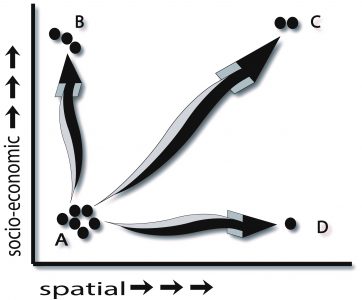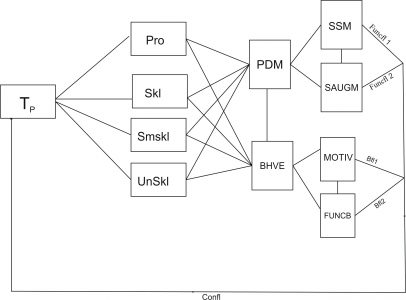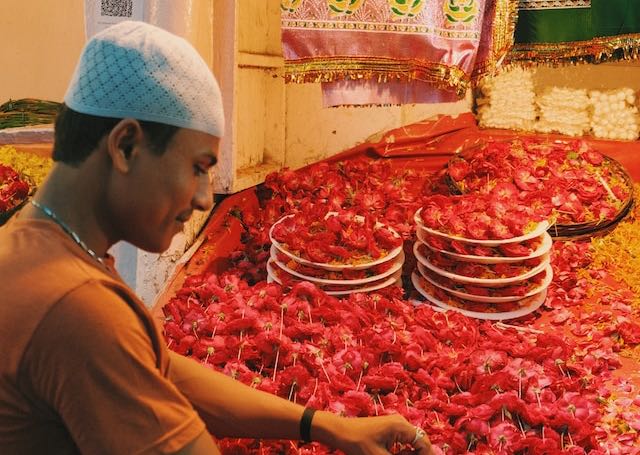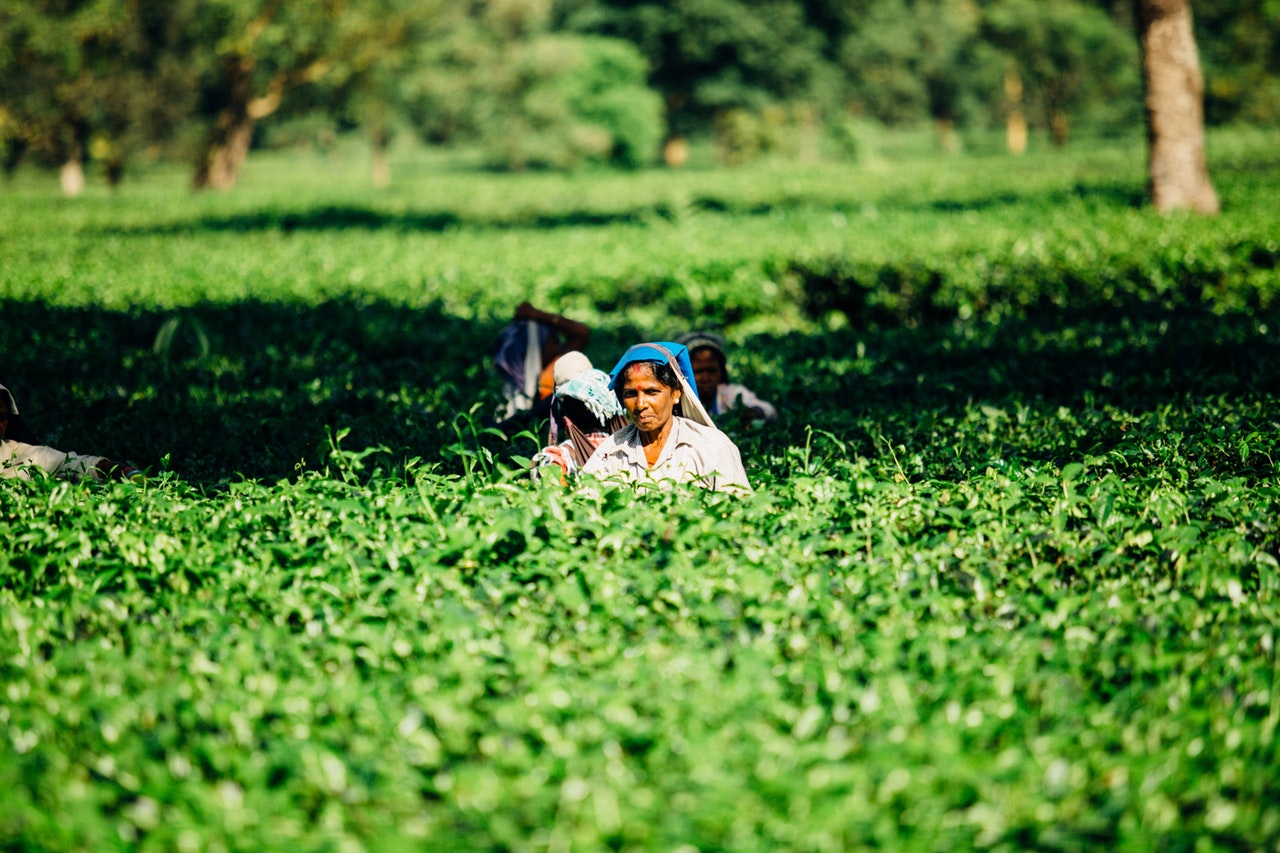Tea Estate workers in India have a long history of exploitation, from the time of colonial plantations to modern times. Generations of suffering have created subdued mentalities that discourage spatial and societal mobility, and in turn hinder the modernisation of tea estates. In this post, behavioural scientist Debarshi Roy proposes models that, if implemented effectively, will sustain functional migration of future generations whilst also enhancing efficiency.
Tea cultivation in India traces its origins to 1776 when an English Botanist named Sir Joseph Banks proposed the cultivation of tea in the region. The history of tea cultivation in the plains of West Bengal is a grotesque story of inhuman exploitation of hapless indigenous tribal workers forced by British colonial officers to migrate from their natal homes to work as bonded labourers on tea plantations. They were dehumanised, beaten, and hardly paid any wages (Behal and Mohapatra, 1992). The model used by the British in the tea plantations of Bengal mirrored the models used in the slavery-driven colonial plantations America and the Caribbean.
When India gained independence in 1947, the Plantation Labour Act (1951) improved conditions slightly; however, exploitative managerial practices still continued. Tea Estate workers had no land rights and their dwellings were owned by the tea plantations; thus, if they migrated to improve their lives, they would lose the only homes they had. The workers were rarely promoted to managerial positions even if they had requisite qualifications; and the tea gardens hardly ever provided satisfactory healthcare facilities for the workers. As of January 2021, the daily wage of a tea garden worker was Indian Rupees (INR) 202 (US$ 2.67 approx.).
The tea industry in Bengal faced an existential crisis in the mid-1990s due to high cost of production and the influx of cheaper teas from countries like Sri Lanka and China (Das and Das (2009). These tea estates follow a labour-intensive, relatively inefficient colonial model wherein much of the work that might be automated is performed manually. The resultant situation led to a humanitarian crisis among tea estate workers leading to death by starvation, and increase in human trafficking and crime.
Against this background, this post argues that effective implementation of a systemic model by inculcating tools from behavioural science can motivate and sustain functional migration of future generations of workers with better standards of living. The tea industry can thus enhance efficiency and lower cost of production by embracing automation and technology.
Designing a System to Encourage Migratory Behaviour among Tea Estate Workers
While designing a system to encourage migratory behaviour among tea-estate workers, it is necessary to empathically understand that the behavioural patterns of the workers are unique and have been shaped by the exploitation and dehumanisation faced by them for over a century. There are three psychological barriers to migration faced by tea garden workers: learned helplessness (Seligman & Maier, 1967), where people accept that they are powerless to change their condition for the better; status quo bias (Kahneman et al, 1991), which encourages people to let conditions remain as they are and prevents people from desiring change; and loss aversion (Kahneman and Tversky, 1979), which prompts people to prefer avoiding losses over achieving gains. An effective system to encourage migratory behaviour should be able to override these psychological barriers.
Desired Outcome
The definition of migration within the proposed model includes physical migration to a different area (described as spatial shift) as well as migration from one’s current standard of living to a better standard of living (described as socio-economic migration) which might occur with or without physical relocation.
The population of workers could present diverse points of view, with some absolutely against relocation and others ready to relocate. A successful model should lead to better standards of living (socio-economic migration) irrespective of whether individuals decide to relocate or not.
Figure 1 explains the migration outcome model of the behavioural system that is proposed. Within the population of tea garden workers (A) some would prefer to relocate for a better life (C) while others would prefer to stay in the tea gardens and still want to enhance their quality of life and income levels (B). There would also be a few who would prefer to relocate even if it did not enhance their quality of life (D).

Figure 1: Migration Outcome Model © Author.
An empathic behavioural system would meet the needs of all sections of workers. Thus, those who would not want to relocate could be involved in self-employment schemes like home-based organic farming, home-stay tourism or even managerial positions in the gardens. Those who would want to relocate might be provided with skills, education, career counselling, recruitment support or other encouragement and sustenance for their decision.
Figure 2 represents the Motivation-Capability model. Amartya Sen (1983; 1990; 2009) has propounded the capability approach which relates to the freedom that individuals possess to attain what they desire in life. This model describes interventions to enhance that capability. The population is divided among those who are motivated to relocate and those who want to stay back in the tea gardens. In either case, the model encourages inputs and interventions to be provided to enhance the individual’s capability to lead a better life.

Figure 2: Motivation-Capability Model © Author.
System Design
The behavioural system in Figure 3 above presents a model to promote migratory behaviour among tea workers. The entire population is represented by TP. This can be divided into Professionals (Pro), Skilled (Skl), Semi-skilled (SmSkl) and Unskilled (UnSkl) as per their current acumen and education. In order to motivate and sustain migratory behaviour, input is required in two areas — professional development and behavioural change. These are provided through the professional development module (PDM) and Behavioural intervention module (BHVE).
Professional development will provide professional or vocational skills as well as strategic support like business incubation opportunities, loans and capital and ideation labs via the Strategic Support Module (SSM) and Skill Augmentation Module (SAUGM).
The Behavioural intervention module consists of two parts: Motivational Intervention Module (MOTIV) to augment and sustain motivation; and Functional Behaviour Intervention Module (FUNCB) for teaching behavioural change for professional development, like soft skills.

Figure 3: Behavioural systems model for motivating migration behaviour © Author.
Key: TP > Target population of workers in tea gardens; Pro > Professionals (includes general graduates, post-graduates etc.);Skl > Skilled workers; SmSkl > Semi-skilled workers; UnSkl > Unskilled workers; PDM > Professional development module; BHVE > Behavioural intervention modules; SSM > Strategic support module; SAUGM > Skill augmentation module; MOTIV > Motivational intervention module; FUNCB > Functional behaviour intervention module; Bfl > Behavioural feedback loop; Funcfl > Functional feedback loop; Confl > Consolidated inbound feedback loop.
The different parts of the system are connected through a network of feedback loops which create an intelligent behavioural system and help it to adapt to changes. The flexible and intelligent system will thus adapt continuously to the changing scenario and dynamics as presented through daily operations.
Conclusion
This post has attempted to present a behavioural systems model to facilitate, encourage and sustain migratory behaviour from the tea estates of North Bengal. This is essential for catalysing upward mobility among the long-suppressed tea workers, and will lead to better standards of living among these long-deprived sections of society. Moreover, migration away from tea estates will provide the management with space to experiment with alternative methods of production (including automation) as well as trying indigenous management with the workers at the helm, creating an empathic indigenous management culture.
The model that is presented here uses behavioural sciences as its basis in order to circumvent the challenges and create an adaptive and intelligent system which in turn will present with robustness and sustainability. The model can be replicated among similar societal groups where such migratory behaviour needs to be motivated.
The views expressed here are those of the author and not of the ‘South Asia @ LSE’ blog, the LSE South Asia Centre, or the London School of Economics and Political Science.
Banner Image © Oleg Guijinsky, ‘Blackened Tea Leaves’, 2015, Unsplash.







